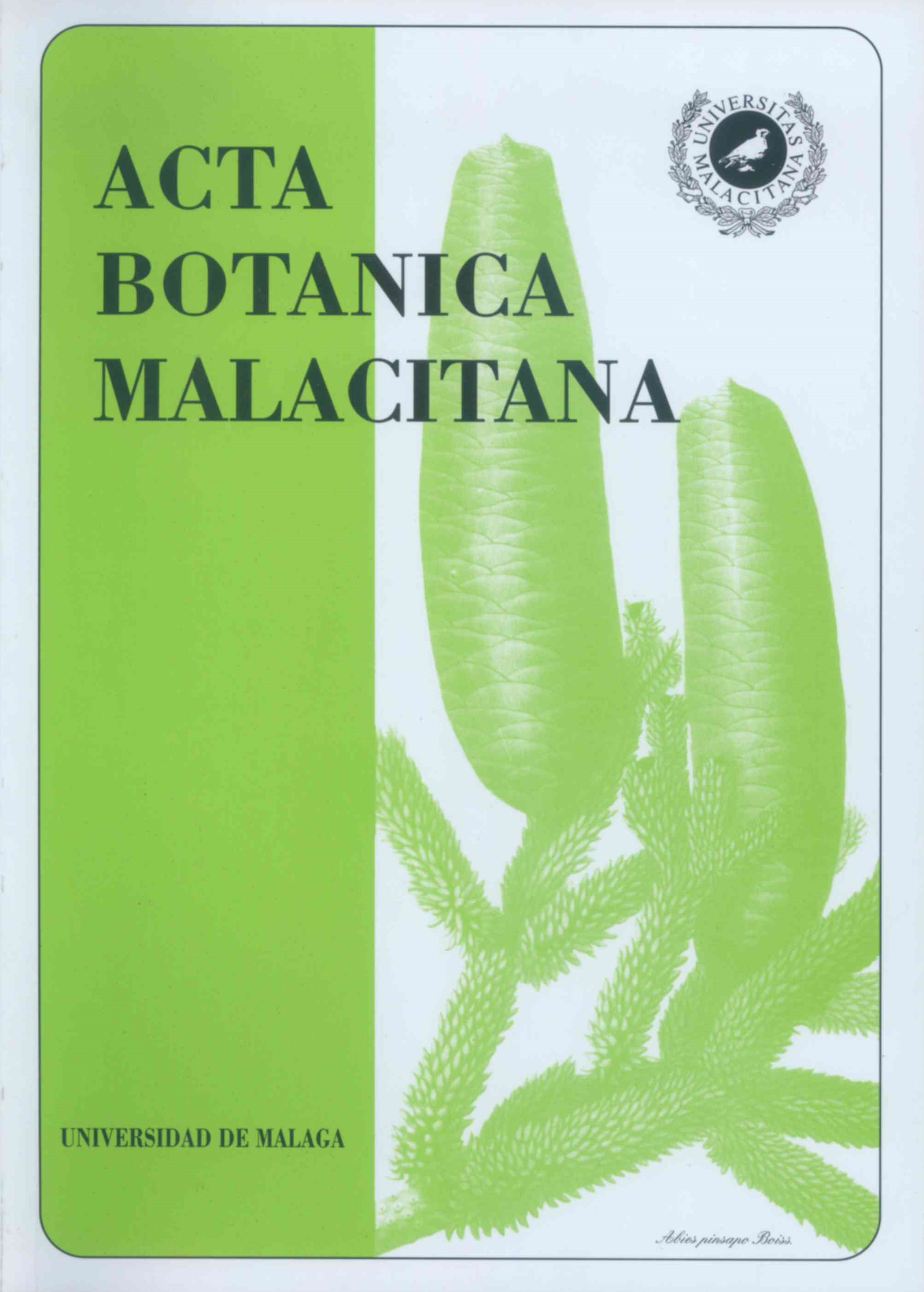Labia/ac checklist for Andalusia (Southern Spain) and the Rif (Northern Morocco).
DOI:
https://doi.org/10.24310/abm.v27i0.7325Abstract
AB S TR ACT. Labia/ac checklist for Andalusia (Southern Spain) and the Rif (Northern Morocco). The taxa of Labiatae from Andalusia (Southern Iberian Peninsula) and the Rif (Northern
Morocco) are included in a checklist, which has about 262 taxa, belonging to 28 genera and 5 subfamilies, representing almost 25% of total Mediterranean Labiatae taxa and c. 70% of total strict Labiatae Mediterranean genera. Nepetoideae with 17 genera is the richest subfamily; Ajugoideae (Ajuga genus), Teucrioideae (Teucriunt genus) and Scutellarioideae (Scutellaria genus) are monogenerics. In this biogeographical region, 23 genera and about 70 species are common to both Andalusia and the Rif (about 88% of all genera and 30% of all taxa). Teucrium, Sideritis Satureja and allied genera, Salvia and Mentha, are the most widespread, representing almost 50% of the total taxa. The importance of the Labiatae family in the Andalusia and the Rif regions is reflected by the fact that they make up c. 20% of all taxa, while 25 of the total number of genera are distributed in the Betic-Rif Mountains. In addition, these mountains, are themselves the richest and best endowed regions of the Andalusia and the Rif, with the greatest concentration of endemic species (c. 65% of total endemisms).
Key words. Labiatae, checklist, biogeography, Betic-Rif Mountains, Andalusia (Southern Iberian Peninsula), Rif (Northern Morocco).
RESUMEN. Labiatae de Andalucía (Sur de la Península Ibérica) y el Rif (Norte de Marruecos). Se presenta una lista de los taxones de la familia Labiatae de Andalucía (sur de la Península Ibérica) y del Rif ( norte de Marruecos), que incluye alrededor de 262 taxones pertenecientes a 28 géneros y 5 subfamilias, representando c. del 25% del total de las especies y c. del 70% de los géneros de la familia Labiatae en el Mediterráneo. Nepetoideae, con 17 géneros, es la subfamilia más ampliamente representada. Ajugoideae (género Ajuga), Teucrioideae (género Teucritan) y Scutellarioideae (género Scutellaria) son monogenéricas. Un total de 23 géneros y cerca de 70 especies son comunes para Andalucía y el Rif (c. 88% del total de géneros y c. 30% del total de taxónes). Teucriton„Sideritis, Satureja y géneros afines, Salvia y Mentha, son los más ampliamente distribuidos y, en su conjunto, representan más del 50% del total de táxones. Las montañas Bético-Rifeñas constituyen el territorio biogeográfico de más riqueza florística de la familia Labiatae en Andalucía y el Rif, estando representados en ellas más del 20% del total de los taxónes y 25 del total de los géneros, es así mismo, la región que concentra más número de especies endémicas (c. 65% del total de endemismos).
Palabras clave. Labiatac, checklist, biogeografía, Montañas Bético-Rifeñas, Andalucía (sur de la peninsula Ibérica), Rif (norte de Marruecos).
Downloads
Metrics
Downloads
Published
How to Cite
Issue
Section
License
All information related to the licensing of published works in Acta Botanica Malacitana and copyright can be found in our Editorial Policy.







1.png)
